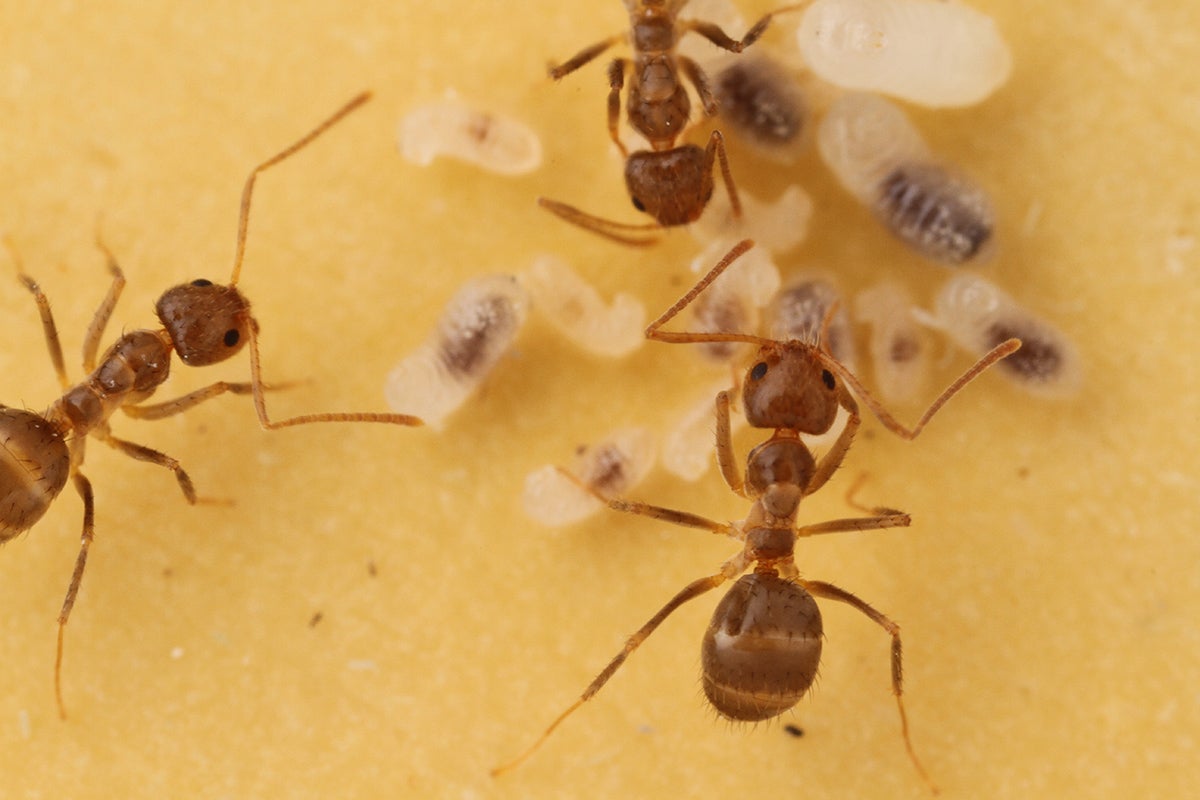For Rainforest Amphibians, the Bigger the Toes, the Higher They Go
In rainforests in Gabon, amphibians with larger toes relative to their body length are found higher in the forest canopy.

Leptopelis boulengeri, commonly known as the Victoria Forest Tree Frog, is just one of the many species noted during a first-of-its-kind amphibian survey in Central Africa. Credit: Edmund Basham.
In the rainforests of Gabon, in Central Africa, trees tower more than 120 feet above the forest floor and are home to dozens of species of frogs and toads. A biology researcher at The University of Texas at Austin set out to discover how this diverse group of amphibians sorted themselves in the vertical ecosystem, conducting the first amphibian survey of its kind in Central Africa.
Edmund Basham, a Stengl-Wyer postdoctoral scholar at UT Austin, along with an international team of researchers from Gabon, USA, Canada, and China, discovered that amphibians with larger toes relative to the length of their bodies were more likely to be found in the higher parts of the tree canopy. Their findings were published this month in the journal Biotropica.
“This result shows that form and function play an important role here,” said Basham, the corresponding author on the paper. “The larger surface area of the toes, relative to the body length, allows these species to climb into the higher vertical spaces.”

Hyperolius mosaicus, commonly known as the South Cameroon reed frog. Credit: Edmund Basham.
Basham spent more than two months in a remote area of Gabon conducting the survey with a small team of local guides. They used ropes and climbing gear to ascend nearly 100 feet above the forest floor to collect frogs and toads for study.
“We thankfully do most of our work at night. It’s a lot less scary because we can’t see the ground!” Basham said. “It can be a bit of a challenging environment to work in, with insects swarming the headlamps and always being on guard for dangerous snakes.”
The survey revealed that the type and number of amphibians was greater towards the forest floor and dramatically decreased as they climbed upwards. From the understory to the tree canopy, the shift in diversity and abundance of amphibians was more gradual. The team noted over 50 different species of amphibians in an area of about 10 square kilometers.
The most diverse area of the forest for amphibians was about 1 to 3 meters up, the paper noted, with 13 different species living together in this stratum of low vegetation. The team also potentially discovered several new species of amphibians during the survey, but they are awaiting confirmation from genetic sequencing tests to be sure.
“This survey covered a pretty small portion of a very large rainforest and because of the vertical nature of the ecosystem we’re just barely scratching the surface of what’s there,” Basham said. “These wild and unexplored places are so beautiful, but also so important. There’s an entire hidden world in the trees and I want more people to look up.”
Brett. R. Scheffers of the University of Florida, Akihiro Nakamura of the Chinese Academy of Sciences in Yunnan, Abraham Bamba-Kaya of the Institute de Recherches Agronomiques et Forestieres in Gabon and Gregory F.M. Jongsma of New Brunswick Museum in Canada and the University of Florida were also authors on the paper. Funding for the research was largely crowd sourced through GoFundMe and private sources.

Phlyctimantis leonardi, commonly known as the olive striped frog. Credit: Edmund Basham.



